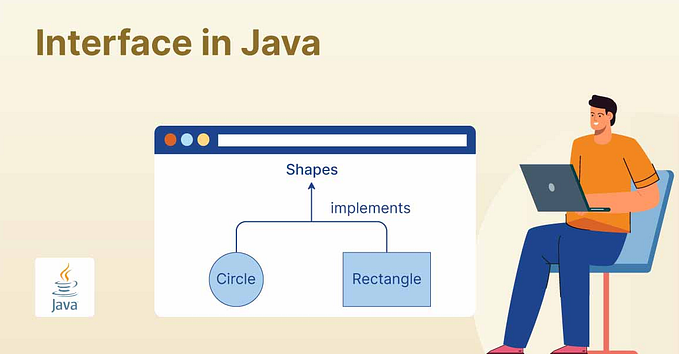Time Complexity Explained with Code Examples

Time complexity is a fundamental concept in computer science that describes the relationship between the running time of an algorithm and the size of the input data. It is essential to understand time complexity because it can help in the design and analysis of algorithms. In this article, we will cover the following:
- Introduction to Time Complexity
- Asymptotic Notations
- Common Time Complexities
- Tips for Improving Time Complexity
1. Introduction to Time Complexity
Time complexity is a measure of the amount of time an algorithm takes to solve a problem, as the size of the input increases. The running time of an algorithm is measured in terms of the number of steps the algorithm takes to solve the problem. The number of steps an algorithm takes is a function of the size of the input data.
2. Asymptotic Notations
Asymptotic notation is used to describe the time complexity of algorithms. The three common asymptotic notations are:
- Big O (O)
- Big Omega (Ω)
- Big Theta (Θ)
Big O (O)
Big O notation is used to describe the upper bound of the running time of an algorithm. It represents the worst-case running time of the algorithm. For example, an algorithm with time complexity O(n) means that the running time of the algorithm increases linearly with the size of the input data.
Big Omega (Ω)
Big Omega notation is used to describe the lower bound of the running time of an algorithm. It represents the best-case running time of the algorithm. For example, an algorithm with time complexity Ω(1) means that the running time of the algorithm is constant and does not depend on the size of the input data.
Big Theta (Θ)
Big Theta notation is used to describe the tight bound of the running time of an algorithm. It represents the average-case running time of the algorithm. For example, an algorithm with time complexity Θ(n log n) means that the running time of the algorithm grows at the same rate as n log n.
3. Common Time Complexities
The time complexity of an algorithm depends on the number of operations the algorithm performs as the size of the input data increases. Here are some common time complexities:
O(1) — Constant Time Complexity
Algorithms with constant time complexity have a fixed running time that does not depend on the size of the input data. For example, accessing an element in an array has a time complexity of O(1).
Here’s a code snippet example:
function getFirstItem(array) {
return array[0];
}This function simply returns the first item in the array, regardless of the size of the array. It takes the same amount of time to retrieve the first item, regardless of whether the array contains one item or a million items. Therefore, its time complexity is O(1), or constant time.
O(log n) — Logarithmic Time Complexity
Algorithms with logarithmic time complexity have a running time that grows logarithmically with the size of the input data. For example, binary search has a time complexity of O(log n).
Here’s an example of an algorithm with O(log n) time complexity:
function binarySearch(array, target) {
let low = 0;
let high = array.length - 1;
while (low <= high) {
const mid = Math.floor((low + high) / 2);
const guess = array[mid];
if (guess === target) {
return mid;
}
if (guess > target) {
high = mid - 1;
} else {
low = mid + 1;
}
}
return -1; // target not found
}This is a simple implementation of binary search, an algorithm that efficiently searches for a target value in a sorted array. The algorithm starts by checking the middle element of the array, and then divides the search space in half based on whether the target is greater than or less than the middle element. It repeats this process until the target is found or the search space has been exhausted. Since the search space is divided in half at each step, the time complexity of this algorithm is O(log n).
O(n) — Linear Time Complexity
Algorithms with linear time complexity have a running time that grows linearly with the size of the input data. For example, iterating through an array has a time complexity of O(n).
This code snippet example searches for a given value in an array:
function linearSearch(arr, val) {
for (let i = 0; i < arr.length; i++) {
if (arr[i] === val) {
return i;
}
}
return -1;
}The time complexity of this algorithm is O(n) because the number of operations performed scales linearly with the size of the array.
O(n log n) — Linearithmic Time Complexity
Algorithms with linearithmic time complexity have a running time that grows as n log n with the size of the input data. For example, quicksort has a time complexity of O(n log n).
Here is a code snippet example:
function mergeSort(arr) {
if (arr.length <= 1) {
return arr;
}
const middle = Math.floor(arr.length / 2);
const left = arr.slice(0, middle);
const right = arr.slice(middle);
return merge(
mergeSort(left),
mergeSort(right)
);
}
function merge(left, right) {
let resultArray = [], leftIndex = 0, rightIndex = 0;
while (leftIndex < left.length && rightIndex < right.length) {
if (left[leftIndex] < right[rightIndex]) {
resultArray.push(left[leftIndex]);
leftIndex++;
} else {
resultArray.push(right[rightIndex]);
rightIndex++;
}
}
return resultArray
.concat(left.slice(leftIndex))
.concat(right.slice(rightIndex));
}This is a recursive implementation of merge sort, which is an efficient sorting algorithm with O(n log n) time complexity. The algorithm works by recursively dividing the array in half until each subarray contains only one element. Then, it merges these subarrays in a sorted order until the entire array is sorted.
O(n²) — Quadratic Time Complexity
Algorithms with quadratic time complexity have a running time that grows as n² with the size of the input data. For example, bubble sort has a time complexity of O(n²).
This code snippet calculates the sum of all pairs of integers in an array:
function sumPairs(arr) {
let sum = 0;
for (let i = 0; i < arr.length; i++) {
for (let j = 0; j < arr.length; j++) {
sum += arr[i] + arr[j];
}
}
return sum;
}The time complexity of this algorithm is O(n²) because it uses nested loops.
O(2^n) — Exponential Time Complexity
Algorithms with exponential time complexity have a running time that grows exponentially with the size of the input data. For example, solving the traveling salesman problem has a time complexity of O(2^n).
This code snippet generates all possible combinations of a given set:
function combinations(set) {
if (set.length === 0) {
return [[]];
}
const first = set[0];
const rest = set.slice(1);
const combinationsWithoutFirst = combinations(rest);
const combinationsWithFirst = [];
combinationsWithoutFirst.forEach(combination => {
combinationsWithFirst.push([first, ...combination]);
});
return [...combinationsWithoutFirst, ...combinationsWithFirst];
}The time complexity of this algorithm is O(2^n) because the number of combinations generated grows exponentially with the size of the set.
4. Tips for Improving Time Complexity
Here are some tips for improving the time complexity of your algorithms:
- Use data structures that have efficient search and insertion operations, such as hash tables or binary search trees.
- Use dynamic programming to avoid redundant calculations and improve efficiency.
- Avoid nested loops whenever possible, as they often result in quadratic time complexity.
- Use divide and conquer algorithms, such as merge sort or quicksort, for problems that can be broken down into smaller subproblems.
- Analyze the time complexity of your code and optimize where necessary.
In conclusion, time complexity is a crucial concept in computer science that every programmer should understand. By knowing the time complexity of an algorithm, you can choose the most efficient algorithm for the problem at hand, and optimize your code to achieve better performance.









